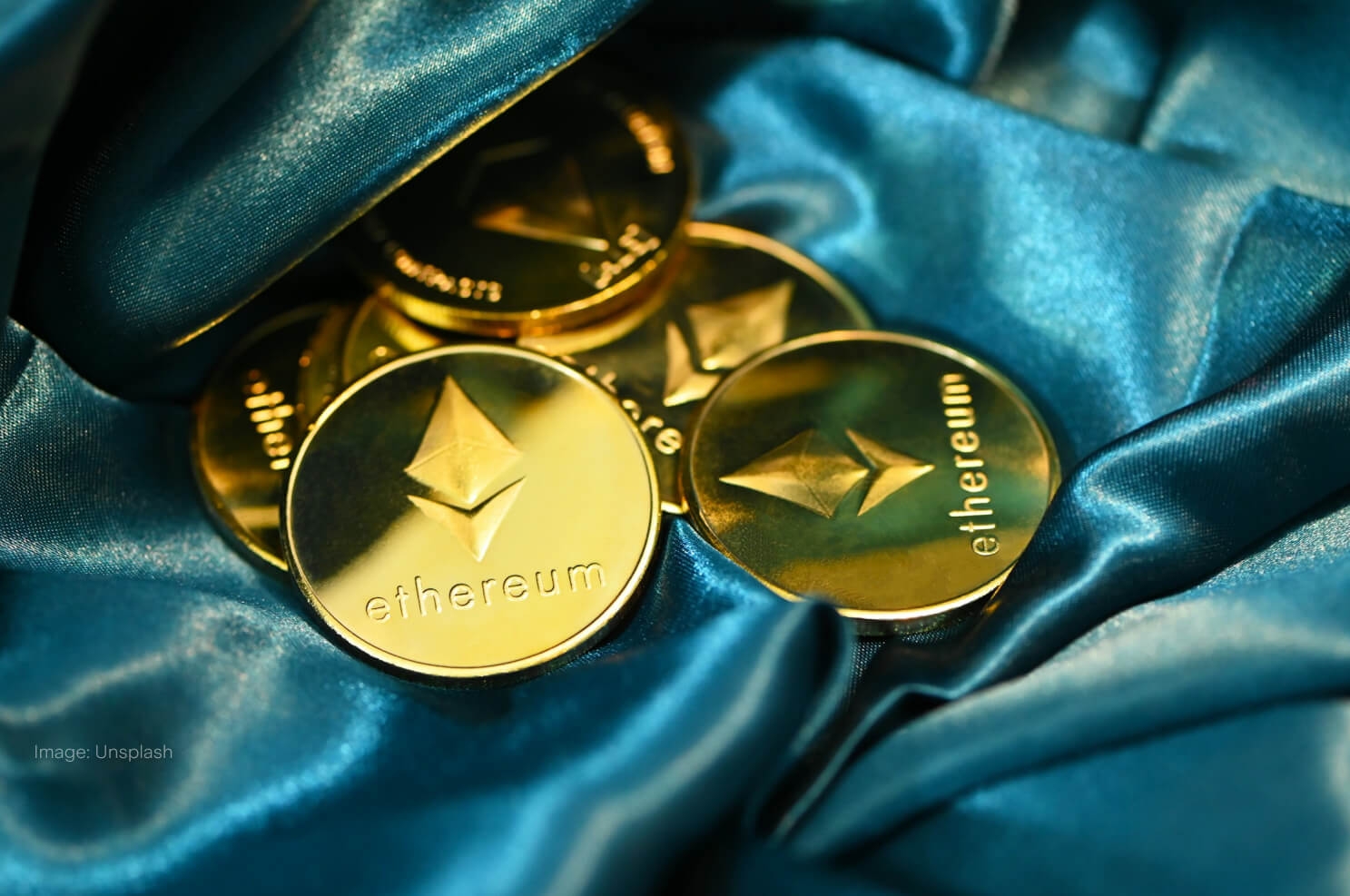
How to invest in Ethereum ETFs in Australia [2024]
Spot Bitcoin ETF made a significant impact on the crypto market when first introduced. With the introduction of Ethereum ETFs, learn more on what Ethereum ETFs are and how you can invest in these when they launch.
Disclaimer: An investment in any crypto ETF can be a volatile investment with a risk of capital loss. Before making any investment decision, consider key risks and all fees and expenses relating to the investment to decide if it’s right for you, and seek advice from a licensed financial adviser where deemed appropriate. This article is for factual purposes only in providing information on how to invest in specific financial instruments. This article does not constitute any recommendation to invest in these financial products and should not be taken as financial advice.
What are Ethereum ETFs?
Ethereum ETFs are designed to track the spot price of Ethereum, with the aim to capture the live price of the cryptocurrency within an investment vehicle available on stock markets. These ETFs can be bought and sold like any other type of Exchange-traded Fund (ETF) on an investing platform.
Before the launch of spot Ethereum ETFs, retail investors typically bought digital coins directly from a crypto exchange or invested in ETFs that traded crypto futures to gain exposure to crypto assets.
These ETFs are held in trading accounts alongside other stocks, while the digital currency itself can be kept in an Ethereum wallet.
The U.S. Securities and Exchange Commission (SEC) approved 9 spot Ethereum ETFs to begin trading on U.S. stock exchanges on May 23rd 2024.
The spot Ethereum ETFs became available across U.S. markets at market open on 23 July 2024. These products will aim to provide investors access to the underlying asset being Ethereum.
🎓Guide: How to buy Bitcoin ETFs in Australia
Ethereum SEC approval update
Update 24 July 2024: The Securities and Exchange Commission (SEC) approved eight Ethereum spot exchange-traded funds late on Monday 22 July 2024. Investors are now able to trade the world's second-largest cryptocurrency in traditional markets. Most of the new spot ETH ETFs will be available on the CBOE exchange, while some, like the Grayscale and Bitwise ETFs, will trade on the NYSE, and the iShares Ethereum Trust on Nasdaq.
The United States Securities and Exchange Commission (SEC) has approved exchange applications to list spot ether ETFs, as announced on May 23rd 2024. This approval marks a significant milestone in the cryptocurrency market, particularly for Ethereum.
This gives investors another opportunity to gain exposure to the cryptocurrency through regulated exchanges.
The approval of the ether ETFs by the SEC could have several implications for Ethereum and the broader crypto market.
It has the potential to increase the accessibility and adoption of Ethereum among traditional investors who prefer to invest through regulated financial products. Additionally, the approval may lead to increased liquidity and trading volume for Ethereum, as spot ether ETFs provide an additional avenue for investors to buy and sell the cryptocurrency. With this increase in volume surrounding Ether, investors should be vigilant of increased speculation which can lead to higher volatility and potential losses.
In the SEC approving the introduction of new crypto ETFs, this may signal to investors of the regulatory authority's growing acceptance and recognition of Ethereum as a legitimate asset class. If this assumption is indeed validated, this has the potential to enhance Ethereum's reputation and credibility among institutional investors and pave the way for further regulatory clarity and mainstream adoption of cryptocurrencies and cryptocurrency products.
Buying Ethereum ETFs in Australia
You’ll need to follow these steps if you are wishing to trade Ethereum ETF products:
1. Find a stock investing platform
To buy Ethereum ETFs, you'll need to sign up to an investing platform with access to the U.S. stock market. There are several share investing platforms available, of which Stake is one.
2. Fund your account
Open an account by completing an application with your personal and financial details. Fund your account with a bank transfer, debit card or even Apple/Google Pay.
3. Search for Ethereum ETFs
Find the ETF by name or ticker symbol, say, $EETH. It is advised to conduct your own research to ensure you are purchasing the right investment product for your individual circumstances.
4. Set a market or limit order and buy Ethereum ETFs
Buy on any trading day using a market order, or a limit order to delay your purchase of the exchange-traded fund until it reaches your desired price. A method to mitigate risk is dollar cost averaging but it is recommended for the individual to reach out to a financial advisor to manage risk effectively for individual circumstances.
Ethereum ETFs can be purchased during regular trading hours, pre-market, and after hours. Be aware that trading outside regular hours may carry additional risks such as lower liquidity and higher price volatility. Learn more about extended hours trading.
5. Monitor your investment
Once an ETF has been purchased, you can monitor its performance. It is recommended to check all portfolios on a regular basis to ensure investments are aligned on an ongoing basis with individual financial goals.

What types of ETFs hold Ethereum?
There are primarily two types of Ethereum ETFs: spot ETFs and futures contract-focused ETFs.
Ether Spot ETFs
The spot Ether ETFs hold actual Ethereum tokens in their portfolio. Each share of a spot ETF represents a portion of the Ethereum held by the fund. These ETFs aim to directly track the price of Ethereum by maintaining a reserve of the cryptocurrency equivalent to the amount invested in the fund.
When investors buy shares of a spot ETF, the fund uses the capital to purchase Ethereum. When investors sell shares, the fund may sell the corresponding amount of Ethereum. This direct holding structure means that the performance of a spot ETF mirrors the price movements of Ethereum as closely as possible.
💡 Discover: What are the best Ethereum ETFs to watch?
Ether Futures contract-focused ETFs
These ETFs do not hold actual Ethereum tokens. Instead, these exchange-traded funds invest in ether futures contracts, which are agreements to buy or sell Ethereum at a predetermined future date and price. These ether futures ETFs aim to gain exposure to Ethereum by speculating on its future price rather than holding the cryptocurrency itself. The fund managers of futures ETFs actively manage these contracts, and the buying and selling of them to align with the fund's investment strategy.
The performance of a futures contract-focused ETF depends on the price of the futures contracts rather than the spot price of Ethereum. This has the potential to lead to differences in performance compared to the actual price of Ethereum, especially over short periods.
What Ethereum ETFs are available to invest in?
Ethereum ETFs are available for trading on a number of share trading platforms, one of which is Stake. Check out the list of newly launched Ethereum ETFs below:
Spot Ethereum ETFs
The following spot Bitcoin ETFs have been made available for trading:
- Grayscale Ethereum Mini Trust ($ETH)
- BlackRock's Shares Ethereum Trust ($ETHA)
- Bitwise Ethereum ETF ($ETHW)
- Franklin Ethereum ETF ($EZET)
- VanEck Ethereum ETF ($ETHV)
- 21Shares Core Ethereum ETF ($CETH)
- Invesco Galaxy Ethereum ETF ($QETH)
- Fidelity Ethereum Fund ($FETH)
- Grayscale Ethereum Trust ($ETHE)
Some already existing Ethereum ETFs were available for investment prior to the launch of the new spot ETH ETFs listed above:
VanEck Ethereum Strategy ETF ($EFUT)
The VanEck Ethereum Strategy ETF primarily invests in futures contracts tied to Ethereum. Futures contracts are financial derivatives that enable investors to speculate on the future price of Ethereum without directly owning it. While futures trading offers potential leverage and higher returns, it also entails increased risks, including the possibility of significant losses. This ETF provides investors with exposure to Ethereum's price movements through futures contracts, offering an alternative to holding the actual cryptocurrency.
Please see the above description of ‘Ether Futures contract-focused ETFs’ for more information.
ProShares Ether Strategy ETF ($EETH)
Similar to the VanEck ETF, the ProShares Ether Strategy ETF is another ether futures ETF available on Wall St. ProShares offers a range of ETFs designed to provide exposure to various asset classes, including cryptocurrencies. Investors considering this ETF should be aware of the risks associated with futures trading, like market volatility and the potential for losses.
Global X 21Shares Ethereum ETF ($EETH)
The ASX-listed Global X 21Shares Ethereum ETF differs from the previous two in that it provides direct exposure to the spot price of Ethereum, being Australia’s first spot Ethereum ETF. Unlike futures-based ETFs, this ETF holds actual Ethereum tokens, allowing investors to gain exposure to price movements in Ethereum more directly.
Direct exposure to Ethereum through spot ETFs may be more appealing to some investors seeking to avoid the complexities and risks associated with futures trading.
The SEC is currently waiting on the submission of S-1 forms by ETF issuers. There may be some weeks before the new spot Ethereum ETFs are available to trade on the U.S. markets, with speculation they will launch in June.
💡Tip: An S-1 form is a registration document that a company must file with the SEC to disclose financial and business information before going public with new securities.
✅ Learn more: List of the 11 spot Bitcoin ETFs approved by SEC
What are the risks of investing in Ethereum ETFs?
It’s important to recognise that Ethereum, the underlying asset to Ethereum ETFs itself, is volatile and may not be suitable for each individual’s risk appetite. Investors should be aware that these new assets come with a number of risks and don’t fit within everyone’s investment strategy. These risks include but are not limited to:
- Market volatility: Ethereum ETFs may be subject to high market volatility when they launch, which can lead to significant price fluctuations and potential capital loss.
- Regulatory changes: The SEC has approved the new Ether ETFs but future changes in regulations or government policies or legislation regarding cryptocurrencies has the potential to impact the value and legality of Ethereum ETFs.
- Liquidity risks: The liquidity of Ethereum ETFs can vary, especially during pre-market and after-hours trading, which might lead to difficulty in buying or selling shares at desired prices.
- Counterparty risk: The performance of Ethereum ETFs depends on the counterparties involved, such as the ETF issuer and the custodian holding the underlying assets, which introduces additional risk factors.
- Potential for loss: As with any financial investment, there is a significant risk of losing the entire capital invested in Ethereum ETFs, particularly due to the inherent volatility associated with the cryptocurrency market.
Ethereum ETFs FAQs
The SEC approved exchange applications to list spot ether ETFs on May 23rd 2024. On 22 July 2024, the SEC gave official approval for the spot Ethereum ETFs. These 8 new ETFs became available for trading at market open on 23 July 2024.
While Ethereum spot ETFs will aim to track the spot price of Ethereum, it may be challenging to anticipate their impact on Ethereum's price.
The introduction of these new ETF products presents additional opportunities for active traders, potentially leading to increased speculation and volatility. Institutional investors no longer necessarily need to acquire large quantities of Ethereum through private funds and trusts, which often involves paying for these at a premium. Some may also argue that this increased accessibility could contribute to downward pressure on the cryptocurrency's price.
Should these ETFs attract substantial investment inflows, this demand could potentially drive up the price of Ethereum. Moreover, market perception of regulatory approval for these products could serve as a validation signal, enhancing Ethereum's reputation among investors. Additionally, any further regulation introduced to the cryptocurrency ETF market could have the potential to place downward pressure on the price of these products.
Investing in an Ethereum ETF is not the same as owning Ethereum. Spot Ethereum ETFs intend to track the spot price of the underlying asset, Ethereum, and aim to best capture the current price of the cryptocurrency. However, these ETFs may still trade at a premium or discount to the actual Ethereum price.
Buying Ethereum directly usually occurs through a crypto exchange, and the assets are then stored in a digital wallet in an individual’s name. For crypto ETFs, the issuer will buy the digital coins and make an arrangement with a custodian to hold the assets, with the individual investor seeing the ETF alongside other holdings in their account on an investment platform.
It is important to note that the risks and benefits of investing in an Ethereum ETF versus buying the actual asset can differ. It’s important to understand how both products operate and align this with your own risk appetite and investing goals. Higher potential rewards tend to come with higher risk levels when investing. That means some products can present more disadvantages than benefits for the average investor.
The information contained above does not constitute financial product advice nor a recommendation to invest in any of the securities listed. Past performance is not a reliable indicator of future performance. When you invest, your capital is at risk. You should consider your own investment objectives, financial situation and particular needs. The value of your investments can go down as well as up and you may receive back less than your original investment. As always, do your own research and consider seeking appropriate financial advice before investing.
Any advice provided by Stake is of general nature only and does not take into account your specific circumstances. Trading and volume data from the Stake investing platform is for reference purposes only, the investment choices of others may not be appropriate for your needs and is not a reliable indicator of performance.
$3 brokerage fee only applies to trades up to $30k in value (USD for Wall St trades and AUD for ASX trades). Please refer to hellostake.com/pricing for other fees that are applicable.

Rodrigo is a seasoned finance professional with a Finance MBA from Fundação Getúlio Vargas, one of Brazil's premier business schools. With seven years of experience in equities and derivatives, Rodrigo has a profound understanding of market dynamics and microstructure. Having worked for Brazil’s biggest retail algorithmic trading platform SmarttBot, his expertise focuses on risk management and the analysis, development and evaluation of trading systems for both U.S. and Brazilian stock exchanges.


